Archive for the ‘purple’ Category

Common Name(s): Texas Vervain, Slender Vervain,
Scientific Name: Verbena halei
Family: Verbenaceae
Bloom Period: Spring, Summer, Fall; February – December
Habitat: Prairies, Pastures, Fields, Open Woodlands, Disturbed areas
Description: Calyx -5; Corolla – sympetalous, united at base ; Stamens – 2 ; Pistil – 2. Fruit – drupe.
General Info: An ubiquitous plant that can be found flowering almost year round. Similar species: V. officinalis, an invading species from England
Commentary: This flower is very common. Look for the tiny purple flowers, and characteristic shape of the overall plant. This was considered an important medicinal herb by many Native Americans. A tea can be made from this plant, but caution! Some consider it an entheogen.
Gallery:
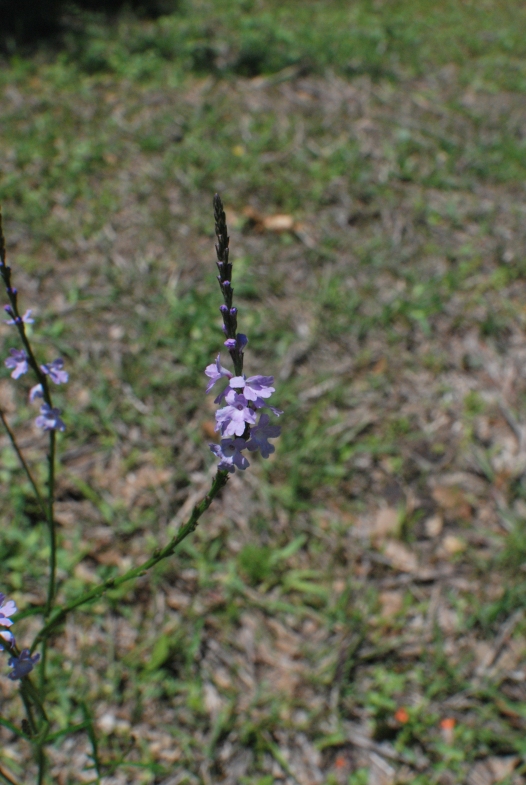


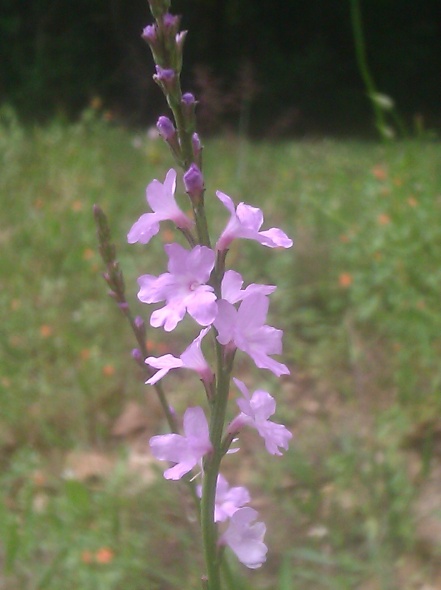

Common Name(s): Violet Wood Sorrel, Purple Wood Sorrel, Wood Sorrel
Scientific Name: Oxalis violacea
Family: Oxalidaceae
Bloom Period: Spring (March – May ), Fall (October -November)
Habitat: Shade to Partial Shade. Near trees or walls (provides shade). Dry Sandy soils, prairies, pastures, open (oak) woods, slopes, rocky areas.
Description: Terminal clusters on scapes. Callyx -5 sepals; Corolla – 5 petals, united at base; Stamens – 10 yellow; Pistil -1 ; Fruit ovoid capsule.
General Info:
A very pretty, long-blooming flower, that grows in clusters . It blooms twice a year: in Spring with leaves, and in Fall, mostly flowers only. Typically grows and spreads in colonies. The flowers close up during cloudy or overcast weather, and the leaves exhibit “sleep movements”, i.e. folding down and inward. The flower closes in a characteristic spiral motion.
Commentary: Look for this flower at the base of large trunked trees, and partial to full shade areas near openings in brush or forest. There is quite a variation of pink to lavender shades exhibited by this flower. The leaves are edible (for tea) and are pleasant to chew -a faint sour taste characteristic of the Oxalidaceae family.
Gallery:



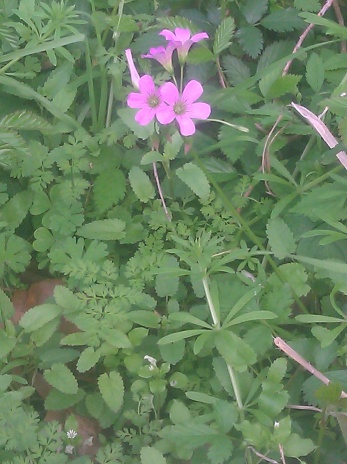



Common Name(s): Blue-Eyed Grass, Dotted Blue-Eyed Grass,
Scientific Name: Sisyrinchium sp. (S. pruinosum; S. langlosii; S. sagittiferum; S. minus; S. albidum)
Family: Iridaceae
Bloom Period: Spring, March – May
Habitat: Clay, Sand, Meadows, Prairies, Pastures, open woodlands,
Description: Solitary or terminal clusters. Callyx -3; Corolla – 3; Stamens – 3 yellow; Pistil 3; Papery bracts
General Info: These flowers burst suddenly in fields everywhere in early Spring. They often grow in clumps, and plant body resembles grass. Flowers close in the afternoon, or if it’s cloudy. There are many colors and fine differences between hybrids and species…not discussed here, simply grouped as Sisyrinchium.
Commentary: This is an especially fun, often overlooked treasure. This springs up over the place in open areas, giving clumps and splashes of colors. There is a seemingly endless variety of shades and hybrids, spanning from blue, to pink, to purple and even yellow! (S. microanthum).
Gallery:






Common Name(s): Toadflax, Toad-flax, Texas Toadflax
Scientific Name: Nutallanthus texanus; Prev. Linaria texana
Family: Scrophulariaceae
Bloom Period: Spring, February – May
Habitat: Dry, sandy soils, Roadsides, uncultivated fields, disturbed areas, open areas of woodlands, prairies, pastures
Description: Terminal raceme. Callyx -5 united at base; Corolla 5: united -2-lipped; Stamens – 4; Pistil- 1:2. Slender spur; Fruit: oval capsule, full gray seeds.
General Info: This is a beautiful lavender colored flower. It is easily overlooked, since it only grows 1-3 feet tall, requires relative shelter, and blooms for only a very short time. However, this gem is well worth hunting for. Its nectar attracts bees, moths and butterflies; the buckeye butterfly (Junonia coenia) larvae feast on this particular species.
Commentary: Check out this fascinating flower structure. Part of the Figwort (Snapdragon) family, the corolla is united to form a 2-lips, spurred at the base. (The spur looks like a little tail on the backside). The nectary for pollinators lies at the base of the ovary, collecting in the backward facing spur. The pollinator must pry the lips apart, and use a long tongue to reach the nectar.
Gallery:
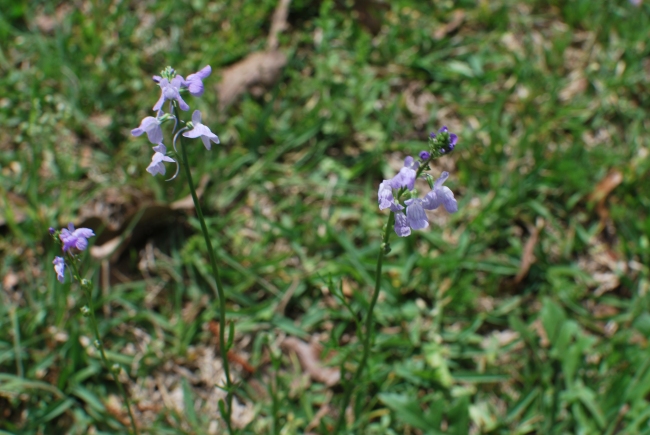



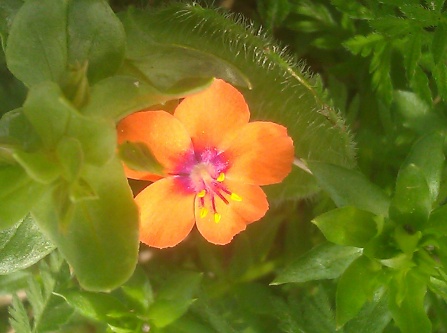
Common Name(s): Scarlet Pimpernel, Red Pimpernel, Red Chickweed, Burnet Rose, Poor Man’s Barometer, Poor Man’s Weatherglass, Shepherd’s Weatherglass, Shepherd’s Clock
Scientific Name: Anagallis arvensis
Family: Primulaceae
Bloom Period: Spring
Habitat: Waste area, disturbed areas, sandy soils, pastures, prairies, roadsides
Description: Calyx – 5; Corolla – 5 lobed; Stamens -5 epipetalous; Pistil – superior – 1:5. Fruit capsule.
General Info: Native to Europe and North Africa, this alien species is low- growing annual, that spreads widely, but rarely above 1 foot tall. Its seeds are hugely popular among birds, which has aided its general categorization as a weed. This wildflower is a classic example of the Primrose family. The blue “form” is now classified as a separate species, A. coerulea.
Gallery:






Common Name(s): Henbit, Dead Nettle
Scientific Name: Lamium amplexicaule
Family: Lamiaceae
Bloom Period: Winter, Spring, November – May
Habitat: All soils, esp. disturbed areas, roadsides, and edges of fields and woodlands
Description: Perfect flowers, whorled around leaflike bracts. Synsepalous Calyx – 5, 2-lipped; Corolla- 3 lobed; Stamens -4 in 2 sets; United Pistil – 2. Fruit – 4 nutlets.
General Info: Native of Europe, this invasive species is now an established prolific weed. (Fortunately, like many weeds, it has pretty flowers). Although it can flower as early as November, Henbit’s pink flowers don’t usually show up until January. Despite its reputation as a weed, Henbit is a great source of early nectar for insects.
Gallery:







































